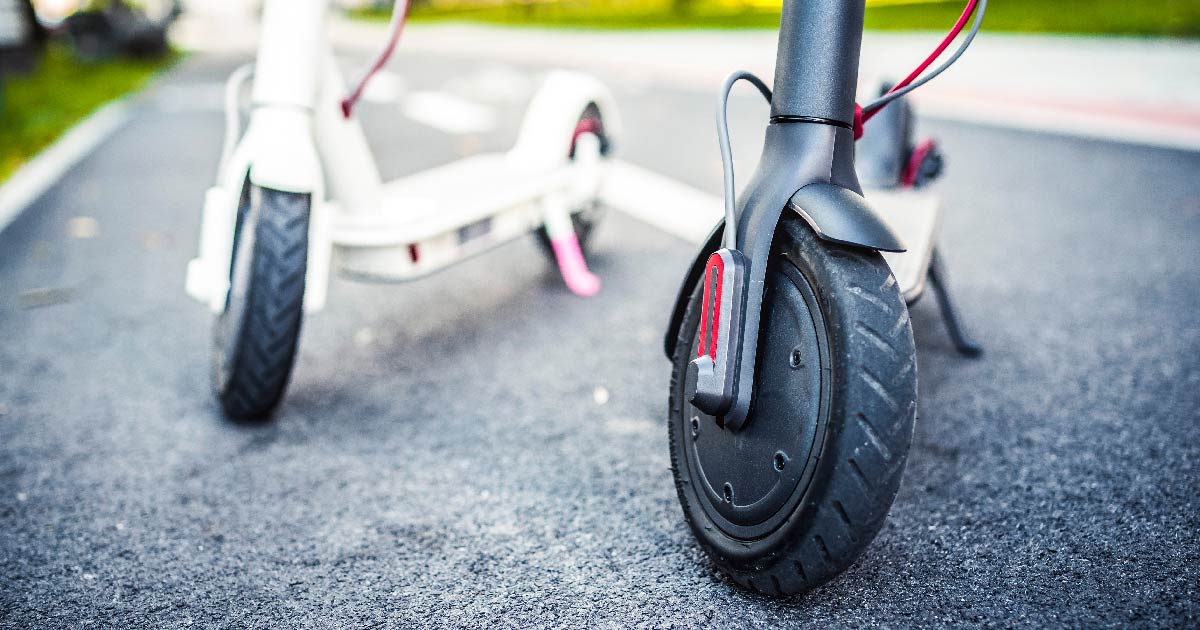The Stops and Starts of Shared Mobility
Posted: 08/10/2021 | Author: Jim Lochner for Creatives On Call | Tags: Thought Leadership, Industry News

Before COVID struck, shared mobility—the short-term, shared use of vehicles, motorcycles, scooters, and bicycles—was all the rage. Smartphone apps provided riders with quick, easy access to search, book, unlock, cancel, unsubscribe, and rate, all in the palm of their hand. When the pandemic hit, some forms of shared mobility plummeted while others took off. The easing of restrictions has only encouraged further growth in specific segments, while health concerns still lock the wheels of others.
Interested in chatting more about how to build a team to deep dive into your auto and mobility needs? Reach out here.
Ridesharing
Pre-pandemic, ride-hail companies like Uber and Lyft promoted shared trip programs as a way for riders to save money and help ease traffic congestion simply by splitting their trip with a stranger or two. But a pooled rider’s experience could run the gamut from sharing a nearly identical itinerary to a long journey all over town to accommodate multiple riders. There were also privacy concerns, especially for women, and the more significant discounts on shared rides cut into company revenues, suggesting they were a money pit. When the pandemic hit, ridership dropped 70%–80%, and Uber and Lyft put their pooled products—UberPool and Lyft Line—on pause. Today, the idea of piling into a car full of strangers is even less appealing. Even once COVID subsides, ridesharing may never return. But peer-to-peer car-sharing (think Airbnb for cars) is on the rise and is predicted to grow to 990,000 vehicles by 2025.
Autonomous Vehicles
Autonomous vehicles (AVs), or self-driving cars, have arrived. While the technology is more prevalent in shuttles and buses, some of the same concerns with human-driven ride-shares become amplified with AVs. In other words, would you feel any safer in a car full of strangers without a vetted driver at the wheel? And with a jaw-dropping price tag of $100,000 per vehicle, it’s a tough sell for many business, much less the average consumer. Still, by 2030 there could be 20.8 million autonomous vehicles in operation in the US, a $2 trillion market.
Scooters
Scooter usage has always been a seasonal business, with ridership freezing in winter. The pandemic was particularly tough for the scooter industry. In March 2020, Bird laid off a third of its staff, while rival Lime accepted a cash infusion from Uber Technologies at a 79% lower valuation. But social distancing convinced more city dwellers to turn to scooters as an alternative to the close quarters of public transportation. As a result, the global electric scooter market is expected to grow from $1.92 billion in 2020 to $3.50 billion in 2026.
E-bikes
As more cities convert car lanes into bike lanes, shared e-bikes are taking advantage of the new space. With speeds of up to 15 mph, e-bikes are one of the fastest forms of single-rider shared mobility. E-bike usage showed speedy growth during the pandemic as well, tripling from 11% (240,000 rides) to 38% (1.4 million trips). The e-bike market share is predicted to be worth $72.73 billion by 2027.
Challenges of Shared Mobility
The pandemic changed shared mobility in ways that are still being calculated and discussed. Some of the biggest challenges moving forward include:
Hygiene. Thanks to their one-at-a-time ridership, scooters, bikes, and mopeds have built-in social distancing. But that doesn’t mean they’re necessarily virus-free. Companies will have to continue addressing the issue of disinfection of contact points.
Ridership. With tourism still recovering, there’s a shift from casual users (like tourists) to regulars. To keep those local riders, operators will have to adapt their pricing, which is currently not tailored to regular usage. Solutions have included offering long-term rentals for shared scooters or bikes and monthly subscriptions to maintain a low per-ride cost for regular users.
* * *
Shared mobility is more ecological and, depending on the mode of travel, safer from virus infections. While it’s doubtful ridesharing will ever bounce back, shared mobility still has an expected compound annual growth rate (CAGR) of 25.1% by 2025. Companies that focus on hygiene and embrace the locals will see the lion’s share of success.
Looking to take your mobility strategy to the next level? Need help with content creation and messaging? We can help! Creatives On Call has experienced creatives standing by. Give us a call!
____________
This is a time for marketers to step up to the challenge and get creative in meeting current demands and behavior changes. Creatives On Call supports your business through this. Contact us here. We have Marketing professionals ready to start in areas including:
- Strategy & Advisory
- Design and Production
- Content Creation & Management
- Customer Engagement & Experience
- Learning & Knowledge Management
- Digital Technology & Transformation
